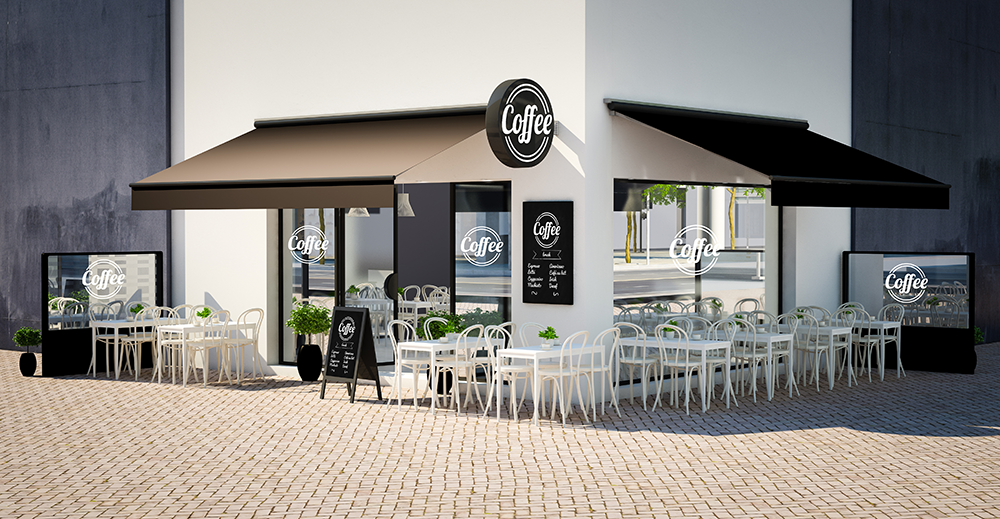
By Daniel Lummis, Marketing Consultant, Bladon WA
The way your restaurant is presented to consumers is very important. Building a strong, focused corporate identity will help create a favorable image of your company in people’s minds.
But what exactly is corporate identity? And how can you build a positive corporate identity that will set you apart from the competition and help you grow your restaurant?
Defining Corporate Identity
The term corporate identity is often used to refer to a company’s physical expression which includes taglines, logos, flyers, fonts, colors, social media, etc. It’s like your restaurant’s branding, but corporate identity is much more than visual appearance; it is a combination of your restaurant’s values, culture, and communications.
The Importance of Corporate Identity

Corporate identity isn’t something related to big corporations only. In fact, even if you’re a small restaurant, chances are you already have a corporate identity (social media presence, logo, etc.).
The question is: do you want to turn it into a powerful tool for success? If you are, then be prepared to go beyond visual appearance. You’ll also need to work on your restaurant’s personality, and fix what’s not working.
Creating a strong corporate identity for your restaurant will enable you to:
- Have consistent external and internal communication
- Stand out from the competition
- Effectively engage with investors, employees, and customers.
What Does Corporate Identity Consist of?

Here are the components that build a strong corporate identity:
Personality and culture
As mentioned before, corporate identity goes far beyond design. It encompasses everything your brand represents. This includes:
– Purpose and vision. Having a great menu is not enough to attract new guests. Ask yourself: What is your mission? Why should people care about your product?
– Culture, behavior, and values. Giants like Facebook and Google work hard on their corporate culture. By allowing flexibility and interaction, these companies make people comfortable, boost creativity, and build trust. The culture is reflected in the company’s leadership, policies, and the people it employs.
Design
Your restaurant’s culture and values need to be reflected in your design elements, too.
Website. Your restaurant’s website is the first thing potential guests see when they search for you online. That’s why you need to make sure it’s visually appealing, easy to use, and that it offers valuable information (like your menu, hours of operation, takeout/delivery info, etc.).
Social media. Social media networks come right after your website, so ensure your company image is consistent through all platforms.
Logo. The logo should symbolize your brand. It should represent your company’s values and produce positive feelings in consumers.
Physical locations. While online identity is very important, we shouldn’t forget the real world. Your company’s locations, vehicles, uniforms, as well as the way your employees present themselves are also part of your restaurant’s corporate identity.
Merchandise and packaging. Make sure that the packaging of your products, as well as all merchandise, are consistent and reflect your company values.
Company communications. Design also plays an important role in corporate communication. This includes business cards, envelopes, letterheads, etc. All these are seen by guests, partners, and investors, so make sure their design is consistent, professional, and presentable.
5 Tips to Help You Build Your Restaurant’s Identity

Here is how to create a strong corporate identity for your restaurant:
#1 Look Back
In order to be able to craft the right corporate identity, take some time to think about the reasons that motivated you to found your restaurant. What was your purpose back then? How did you plan to develop your business? No matter how much your business has evolved, these things still form a base for building strong identity.
#2 Where is Your Restaurant Now?
Before you begin moving forward, you need to figure out where your restaurant is at the moment. Use surveys and polls to determine how your customers and employees perceive you. In addition, examine the impression your company materials create in people. If the results are positive, you’re on the right track. If not, be prepared to make changes and use them as a foundation for your corporate identity in the future.
#3 Envision the Future
When developing your corporate identity, you’re not doing it for the present moment. That’s why you need to have a clear vision of what you want for your company in the future. Ask yourself: Where do you see your restaurant in five years? Will you have any new services or menu items? How many employees will you have and how will the teams be structured? The corporate identity you build today should be relevant in the future and help you achieve your goals.
#4 Look into Your Competitors
When crafting your corporate identity, it’s very important to stand out from the competition. To be able to achieve this, you’ll need to look beyond your own company. Do some research to identify your competitors. Once you do this, analyze their corporate identity: What do you like/dislike? What makes a certain company more successful than another? Take notes and use them when creating your restaurant’s corporate identity.
#5 Start Building Your Corporate Identity
Knowing where you started from, where your restaurant stands today, what your vision for the future is, combined with an insight into your competition, now you can start developing your corporate identity. Don’t forget to consider visual appearance, as well as the brand personality and culture.
Here is how to start:
- Create a brand strategy. The process of creating a branding strategy includes elements that are also important when building corporate identity. So, by doing this, you’ll be able to revisit crucial things such as your purpose, values, as well as your brand positioning and personality.
- Focus on developing brand identity. During this process, you’ll get into details such as logo, website, colors, typography, etc.
- Create a style guide. Create a document that contains details on how your company presents itself to the outside world.
You’ve probably noticed that the three above-mentioned steps all refer to brand instead of corporate. Small restaurants that have only one brand can be effectively represented by that particular brand. And although presenting your company to corporate is different from presenting your brand to customers, the process is similar!






